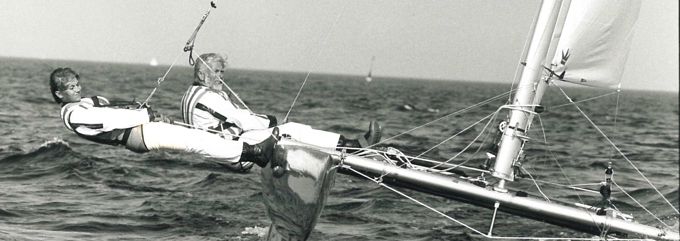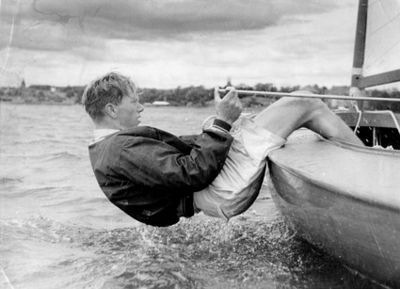
Paul Elvstrøm
Paul Elvstrøm was born on 25 February 1928 and passed at the age of 88 in December 2016. Paul Elvstrøm remains one of the most successful sailors in Olympic history ever and is still today one of the world's greatest sports personalities.
The Elvstrøm Legacy began when Paul Elvstrøm made his sensational Olympic debut in the 1948 games in London and won the gold medal in Firefly.
“When sailing became Olympic, the interest of the press started. In 1948, people didn't know what sailing was all about. In 1952, they knew that there was something called sailing. In 1956, they finally managed to keep up with the Olympic results - and in 1960, they knew all about sailing”, Paul Elvstrøm explained in the middle of 2013 in connection with the 100 years anniversary of “Dansk Sejlunion”.

The strive for improvement
His constant ingenuity and will to improve all aspects of the sport were already present in his early twenties, and the ideas soon became more than sketches and designs for the aspiring sailmaker.
Along the way, Paul Elvstrøm found his own ways to improve his technique and materials. And already at an early stage he found the hanging technique, which soon made his sporting career take off.
Paul Elvstrøm was some 10-15 kilos lighter than his competitors, and this was a clear disadvantage. He turned it all around by training hard to enable himself to hang off the side of the dingy rather than sitting on the side itself. This proved to be a huge advantage, as he could counteract as much as the competitors, but without carrying the extra weight.
He did, however, not only spend countless hours getting the fitness and technique just right. He also introduced his visions for a vast array of improvements and indeed inventions for the sport. The automatic bailer was a silent revolution in all classes of dinghies, and so was the Elvstrøm designed floating vest.
Paul Elvstrøm continued to refine his technique and having followed up on his first gold medal with another win in the 1952 games in Helsinki, his many ideas and insights into dinghy racing became the steppingstone for him to establish his first sail loft in 1954.
At this time, he was working as a building contractor, but as his building business was well on form, he opened the next chapter and set to work with his ideas for sail designs, which was the beginning of Elvström Dinghy Sails – the company that eventually became the Elvstrøm Sails we all know today.
Paul Elvstrøm ended up winning four consecutive Olympic gold medals, which for decades made him the most successful Olympic sailor of all time. His impressive track record has only been broken by Ben Ainslie, who is also accounted for four consecutive golds and five medals in total.
Paul Elvstrøm is still the only sailor in the world to have won sailing world championships in seven different boat classes (the 505, Snipe, Finn, Flying Dutchman, Star, Soling and Half ton).
In all, Elvstrøm won a total of 13 world championships. Paul Elvstrøm has also contributed to the sport by publishing several books on the rules and techniques of racing.
